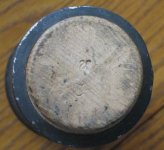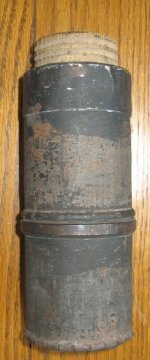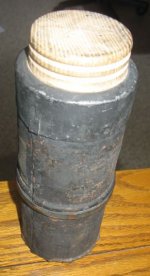Diggin' Dixie
Established Users
Hey Folks,
I am a relic hunter and when someone I met heard about my hobby, they gave me these. They told me they were canister shot. I would assume they are something other than artillery related items due to their crudeness, but wanted to make sure. I measured them with electronic calipers and they measure 2.384 inches in diameter.
Thanks for any info

I am a relic hunter and when someone I met heard about my hobby, they gave me these. They told me they were canister shot. I would assume they are something other than artillery related items due to their crudeness, but wanted to make sure. I measured them with electronic calipers and they measure 2.384 inches in diameter.
Thanks for any info





